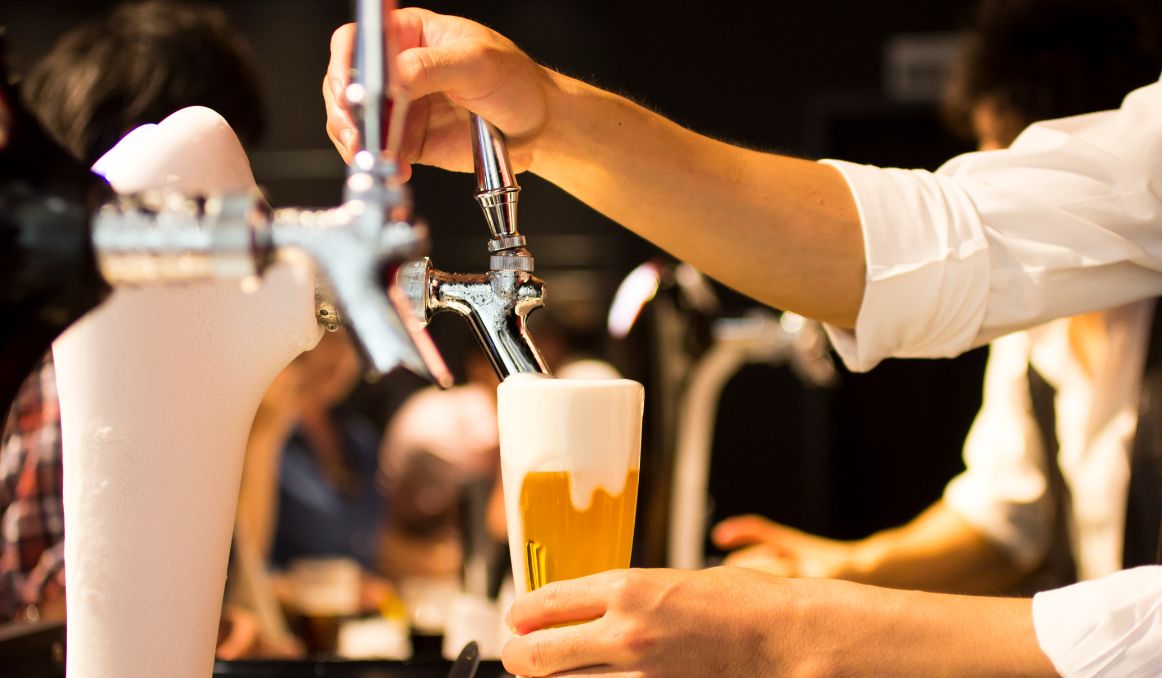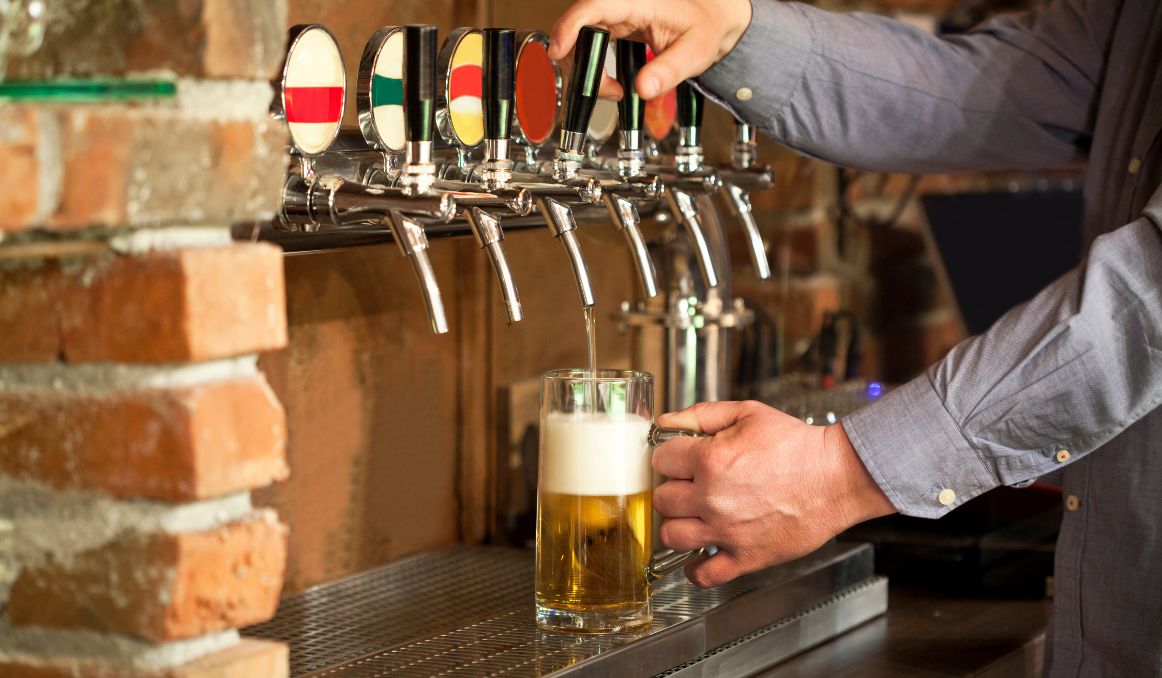Does Draught Beer Taste Better?
If you’ve been wondering: “does draught beer taste better than other types of beer?” The answer, as with most answers to these kinds of questions, is “it depends.”
And it depends on such a wide variety of factors that those factors are worth exploring.
What Is Draught Beer?

Draught beer, also referred to as draft beer, is beer than is stored in a keg once fermentation has completed.
To be clear, there is no difference in the brewing or fermentation of draft or draught beer compared to bottled or canned beer.
In all cases, a grain is harvested, roasted, cracked or ground, boiled and steeped, hops are added, and yeast enters the wort to ferment.
Most often, draft beer is bottle conditioned just as bottled beer is, only in this case it is called “cask conditioned.”
What this term refers to is the priming sugar added just before moving the fully fermented beer to the cask for pressurization and storage.
In the case of draft beer, the wort undergoes primary fermentation, it is racked, and then it undergoes secondary fermentation to allow all the flavors and aromas to mellow out, all off flavors to be “mopped up,” and the crispness and freshness to be locked in.
Then, brewers will add priming sugar and a bit of yeast diluted with water, just enough to drive up carbonation so that when the keg is tapped, the beer will be frothy and foamy at the pub as beer lovers expect.
This process is the same for bottle conditioned beer, so what makes draft beer so different?
How Is Draught Beer Different?
The primary difference for draft beer is that much more control is put into place.
You see, freshness all relies on temperature control, storage, light exposure, and jostling.
Temperature control is much easier to manage and maintain when dealing with kegs as they are large and unwieldy and much harder to simply toss in corner or leave in a shelf and forget about.
Beer kegs are typically kept in refrigeration at all times.
Further, because they are stored in such large containers with so much liquid and in metal pressurized vessels, kegs maintain their freshness for several months, unlike bottles and cans, which usually only promise to maintain freshness for several weeks at most.
This difference is largely due to the fact that bottles and cans can be left on shelves, in the full sun, and moved in and out of refrigeration several times before they are actually purchased.
And even then, a consumer who does not understand proper storage, especially for bottles, may expose the beer to heat and light which will not only destroy freshness but also lend an air and flavor that is akin to “skunkiness” to the beer.
Finally, beer that has been shaken, jostled, and moved around a lot is having its carbonation slowly shaken up and dissipated back into the beer, so that once a bottle or can container is open, is more likely to be closer to flat than the beer that comes out of a keg.
Thus, draft or draught beer is most often fresher than bottled and canned beer because of the greater care taken when handling it, likely due largely to the fact that it is kept under the supervision and purview of restaurant and bar owners who have customers that expect freshness.
Add to that the fact that a keg once tapped is only considered fresh for 3 days, and you have a hyper vigilance with kegs that you just won’t see with bottles or cans.
Of course, factors like dirty keg lines, time since the keg was tapped, and improper storage can certainly make for a less than fresh draft beer experience, so there is no guarantee that draft beer with always be fresher, but the considerations we’ve taken here explain why this is usually the case.
How Much Is Preference a Factor?

And yes, of course, preference and expectation must also be factored in when thinking of freshness.
You walk into a bar or restaurant, you get your beer in a nice cold glass with your meal or while out with friends, maybe you’ve had a long day at work or at a sporting event, and that beer just tastes fresh pretty much no matter what.
It is hard to argue against someone’s personal experience, and there is nothing like a nice cold beer served up while out socializing.
It may even stand that a less than fresh beer tastes good just because you’re so excited to drink it.
Can Bottled or Canned Be Just as Good?
Of course, bottled or canned beer can indeed be just as good and just as fresh as draft beer.
As a consumer, especially if you are serving beer at your home, be mindful of all of the above mentioned factors.
First, bottles and cans are both likely to provide an excellent of freshness when you check the expiration date. So be sure to buy the beer on your shelf that is the newest.
Also, be sure that when you do serve it or drink it at home, that you pour it into a chilled glass. Remember, perception is everything.
Always keep your beer cool. You don’t have to store it in the refrigerator, but at the very least store it in a cool dry place out of the sun that does not heat up or trap heat.
Try to move it as little as possible, so once you find a storage home for your beer, keep it there.
And finally, bring it out on special occasions to share with friends.
There is just no argument against enjoying your favorite beer under perfect conditions with friends.
It is highly unlikely that anyone is going to complain that your beer does not taste fresh.
Cheers!
Passionate about the beer and/or wine making process? So are we! If you’re interested in finding out how you can use our technology to control fermentation and monitor your yeast, save work hours and improve the cost-efficiency of your business, drop us a line at [email protected] or check out our product pages:
- Oculyze BB 2.0 (Better Brewing) Yeast Cell Counter App + Hardware
- Oculyze FW (Fermentation Wine) Yeast Cell Counter App + Hardware
Also, you can now get access to a fully functional demo account to test your yeast via our Web App. Completely free of charge and with no commitment to purchase.
Sources:


